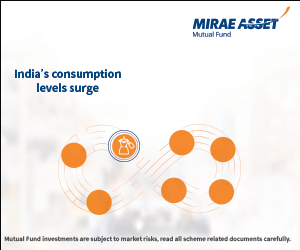Principal Ultra Short Term Fund: Low risk option for parking your surplus money

We have stated a number of times in our blog that you can put the idle money in your savings bank account to productive use by investing it in overnight, liquid and ultra-short duration funds. All three debt mutual fund categories invest primarily in money market instruments, but there are differences between the three.
For the benefit of investors who do not have sufficient exposure to debt funds, we will explain the differences in brief:-
- Overnight funds invest in instruments which mature overnight or next morning. These funds offer very high degree of safety and liquidity. These funds have no exit loads.
- Liquid funds invest in instruments which mature in 91 days or less. These funds also offer safety and liquidity, albeit lesser in degree than overnight funds. After recent SEBI regulations, liquid funds charge exit loads for redemptions within 7 days from purchase date.
- Ultra-short term funds invest in instruments such that the Macaulay Duration of the portfolio is between 3 months to 6 months. Macaulay duration of a fixed income security is related to its maturity. Macaulay duration is usually slightly less than the maturity. Like liquid funds ultra-short term funds have low risk and fairly high liquidity. These schemes may or may not have exit loads.
Principal Ultra-Short Term Fund is an ultra-short duration fund. The scheme was launched in December 2007 and has Rs 62 Crores of assets under management (AUM). The expense ratio of the fund is 1.15%. Bekxy Kuriakose is the fund manager of this scheme. The chart below shows the Net Asset Value (NAV) growth of the scheme over the last 5 years.

Source: Advisorkhoj Research
Investment strategy
The fund invests in fixed income securities like money market instruments, bonds, non-convertible debentures etc. with the aim of accruing yields from the instruments in the very short term (1 to 6 months) while preserving investor’s capital. The fund manager follows stringent liquidity and credit parameters to optimize the risk-return proposition for the investors. To minimize credit risks for investors, the fund invests in highly rated (low credit risk) papers. The mark-to-market component of the fund is managed within defined maturity profile of the scheme.
The modified duration of Principal Ultra-Short Term Fund is 0.32 years - the interest rate risk of the scheme is low. The yield to maturity of the scheme portfolio is 5.41%. The scheme portfolio comprises of highly rated papers (A1+ / AAA) only. Therefore, credit risk of the scheme is also low. It is a good investment option for earning stable returns in the short term with high degree of capital safety.
Scheme Portfolio
About 41% of the portfolio is in Certificates of Deposits which are money market instruments issued by banks and other financial institutions. Another 17% of the portfolio is invested in highly rated commercial papers which are money market instruments issued by corporations. Around 21% of the portfolio is in AAA rated bonds and non-convertible debentures. The remaining portion of the portfolio comprises of cash and cash equivalents.
Returns
The chart below shows the growth of Rs 1 Lakh lump sum investment in the scheme over the last 5 years. You can see that the investment was growing steadily over the last 5 years.

Source: Advisorkhoj Research
Dividend Track Record
The scheme has been paying regular monthly dividends for nearly 2 years. Though dividends are tax free in the hands of the investors, the asset management company (AMC) has to pay 28.8% Dividend Distribution Tax (DDT) before paying dividends to investors. Apart from regular cash-flows, dividend or dividend re-investment option can be more tax efficient for investors in the highest tax bracket over short investment tenures. Short term capital gains in debt funds are taxed as per the income tax rate of the investor.

Why invest in Principal Ultra-Short Term Fund?
- The scheme offers high degree of capital safety (low credit risk) due to the credit quality of the portfolio
- The scheme offers stable returns with low volatility due to the very short duration profile of the portfolio (low interest rate risk)
- The scheme offers high liquidity. You can redeem units of the scheme partially or fully at any time without any exit load
- You can potentially get better returns than your savings bank interest rate
- Though the scheme is primarily suited for very short term investments, there are considerable tax advantages if you invest for over 3 years. Long term capital gains from the scheme will be taxed at 20%, after allowing for indexation benefits.
Summary
Ultra-short duration funds are much better option for parking your surplus funds than keeping it idle in your savings bank account. Principal Ultra-Short Term Fund offers low capital risk, low volatility and high liquidity. They are ideal for investing your money for 1 to 6 months. Depending on your investment needs and tax situation, can select either the growth or dividend options. Investors should consult with their financial advisors if Principal Ultra-Short Term Fund is suitable for their short term investment needs.
Mutual Fund Investments are subject to market risk, read all scheme related documents carefully.
Queries
-
What is the benefit of mutual fund STP
Aug 29, 2019
-
How much to invest to meet target amount of Rs 2 Crores
Aug 26, 2019
-
Can I achieve my financial goals with my current mutual fund investments
Aug 24, 2019
-
Can you tell me return of various indices
Aug 19, 2019
-
What would be the post tax return on different investments
Aug 18, 2019
-
Which Principal Mutual Fund scheme will be suitable for my retirement corpus
Aug 16, 2019
-
What is the minimum holding period for availing NCD interest
Aug 4, 2019
Top Performing Mutual Funds
Recommended Reading
Fund News
-
Franklin Templeton Mutual Fund launches Franklin India Multi Asset Allocation Fund
Jul 11, 2025 by Advisorkhoj Team
-
Bandhan Mutual Fund launches Bandhan Multi Factor Fund
Jul 10, 2025 by Advisorkhoj Team
-
SBI Mutual Fund launches SBI Nifty100 Low Volatility 30 Index Fund
Jul 8, 2025 by Advisorkhoj Team
-
The Wealth Company Rolls-Out World-Class Wealth Management and SIF Training from Moody's and PGP Academy
Jul 8, 2025 by The Wealth Company
-
ICICI Prudential Mutual Fund launches ICICI Prudential Active Momentum Fund
Jul 8, 2025 by Advisorkhoj Team














